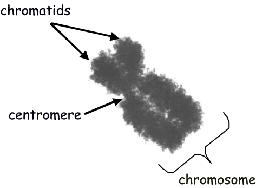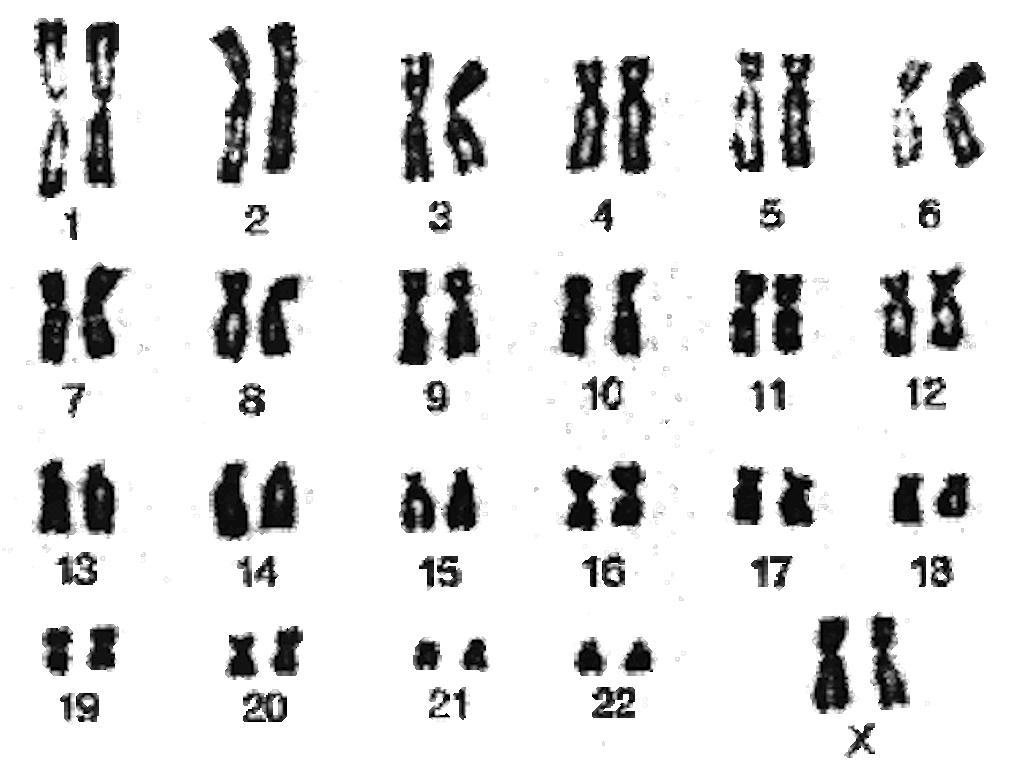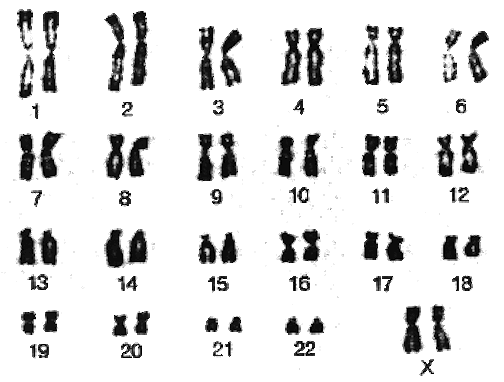The occurrence of paired chromosomes in our karyotype is a result of our sexual origins. We inherit one member of each chromosome pair from each parent. So the 46 chromosomes in our somatic (body) cells are actually two sets of 23 chromosomes—a maternal set (from our mother) and a paternal set (from our father). A cell with two of each kind of chromosome is called a diploid cell and is said to contain a diploid, or 2n, number of chromosomes. All of the cells of our bodies are diploid except for reproductive cells (egg and sperm) and red blood cells (which do not have nuclei).
In humans, the homologous chromosome pairs carry the genes for the same trait aligned in the same order in each person. For example, human chromosome #1 contains, along with many others, the genes for the Rh blood protein and for a starch-digesting enzyme in the saliva. However, the corresponding genes on the two homologous chromosomes are not necessarily identical. For instance, some chromosomes have a gene for the protein that makes a person's blood type Rh-positive, and some have a gene coding for a different version of this protein (Rh-negative) at the Rh location. Different versions of the same gene are referred to as alleles. An individual with two genes that are the same for a trait is said to be homozygous for that trait. A person with two different alleles for the same trait is heterozygous for that trait.
The Human Genome Project has produced a poster called Human Genome Landmarks that shows the locations of selected genes, traits, and disorders. You can download a PDF version of the poster here. Remember these are only a selection of known genes and their locations. There are many more—some known and some, as yet, unknown. Remember also that most genes do not act alone but rather in concert with other genes that may be located on different chromosomes.
In human males, the partners of 22 of the pairs of chromosomes look similar, but the twenty-third pair in males is mismatched with two unlike chromosomes, called X and Y (see the far right chromosome pair in the bottom row of the male karyotype above). In the cells of a female, both members of homologous pair #23 are X chromosomes (far right pair of chromosomes in the bottom row in the female karyotype). The X and Y chromosomes are called the sex chromosomes because they differ between the sexes and because they carry genes that determine the sex of the individual. The other 22 chromosomes are called autosomal chromosomes or simply autosomes.







